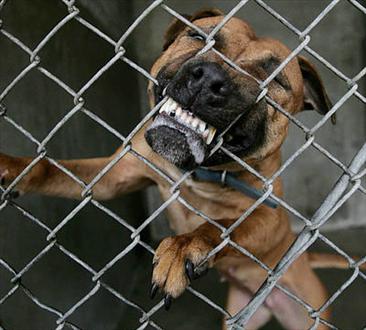 What are “vicious propensities”?
What are “vicious propensities”?
As an New York dog bite and dog attack attorney, I am ready to clear up some of the confusing and complicated terms that come up in dog attack cases.
A key element in many such cases is the owner’s knowledge of their dog’s “vicious propensities.” This knowledge – that the animal presented a risk – is required to prove liability in New York dog attack cases. (See my related post “When Dogs Attack: ‘Vicious Propensities’ and Owner Liability Under New York State Law” for more information on this topic).
Just what are vicious propensities? Vicious propensities are something about a dog’s behavior that should have tipped off the owners that the dog might have the tendency to attack. In a dog attack case, the jury decides this based on the facts and actions in the individual case. Below are some things that have indicated vicious propensity in dogs involved in past cases:
- jumping aggressively against a fence,
- barking and growling, snapping, showing its teeth,
- prior attacks of people by the dog and past declaration of a dog as a “dangerous dog.” See the “Dangerous Dogs in New York” post on this blog for more details on what a dangerous dog is.
However, there are some less obvious indications of vicious propensity:
- keeping a dog for use as a guard dog,
- constructing a pen or fence to keep the dog away from visitors due to past problems,
- “beware of dog” and similar signs,
- verbal warnings to people not to enter the property because the dog was loose on the property,
- records indicating the dog was aggressive,
- the type and severity of the attack on the victim,
- sometimes, past attacks on other animals.
Again, though, these things are just indications that may help prove vicious propensity.
It is important to remember that just because this has lead a jury to believe or not believe in “vicious propensity” in the past does not mean a jury in every situation will agree. The court and jury will look at all the facts of the situation including how often the dog displayed these propensities, whether it was only directed at a few individuals or all individuals and whether the dog’s vicious propensities are similar to the circumstances of the victim’s attack. For example, if the victim was attacked while walking to a mailbox and the information presented on the dog only showed that the dog barked aggressively at cars, that might not be sufficient to make the owner aware of the dog’s vicious propensities.
The court cannot decide a dog has vicious propensities based SOLELY on their size or breed. For instance, some people have argued that certain breeds (e.g. pit bulls, German Shepherds, Rottweiler’s) should be considered “vicious” just be virtue of the stereotyped nature of the breed as aggressive or vicious. The N.Y. courts have rejected this argument and accordingly, the breed of the dog, standing alone, will NOT be considered proof of the vicious propensity of a particular dog from that breed.
Does the victim have to prove that the owner actually knew his or her dog was vicious?
It is not required that a victim of a dog attack actually prove that the owner KNEW the dog had vicious propensities. That would be very difficult to prove what someone else actually knew. Rather, the victim must prove that that dog had certain vicious propensities. If the vicious propensities shown are enough, the court or jury will decide for the injured person based on the idea that a “reasonable person” would have known that their pet had vicious propensities.
Is there a “One Bite Rule” in New York state dog attack cases?
Some people believe that a “one bite rule” exists. A “one bite rule” requires that a dog must have bit a person prior to the current dog attack; therefore, a dog would have to bite on two different occasions before the owner could get in trouble. Under the “one bite rule,” each dog was allowed “one free bite.”
There is not a “one bite rule” in New York. Therefore, a dog can be found to have vicious propensities without having EVER bitten or attacked in the past, rather, other things such as a dog growling, jumping or being used as a guard dog is sufficient.
In other words, dogs in New York do not get “one free bite.” BUT, just because a dog has attacked a person prior does not necessarily mean the jury will find a dog has vicious propensities, either. The jury has to decide whether the prior incident should have made the owner’s aware of the dog’s tendency to attack. Although it is likely the prior attack will result in a finding of vicious propensities, it is not a sure thing.
We hope you found this information helpful. If you or a loved one has been the victim of a dog attack or dog bite please feel free to contact me directly at jreed@zifflaw.com or call 800-ZIFFLAW (943-3529) to discuss your legal options.
Thanks,
Jim
_________________________________
James B. Reed
NY & PA Dog Bite Lawyer
Ziff Law Firm, LLP
303 William St., Elmira, NY 14902
Phone: (607) 733-8866 Fax: (607) 732-6062
Toll-free: (800)-943-3529
mailto:jreed@zifflaw.com www.zifflaw.com
Dog Attacks: Vicious Propensities
What Are “Vicious Propensities”?
An owner’s knowledge of their dog’s vicious propensities are required to prove liability in New York dog attack cases. See the “Liability in Dog Attacks” blog for more information on this. But, what are vicious propensities? Vicious propensities are something about a dog’s behavior that should have tipped off the owners that the dog might have the tendency to attack. In a dog attack case, the jury decides this based on the facts and actions in each case. Below are some things that have indicated vicious propensity in past cases.
Some examples of vicious propensities may seem obvious: jumping aggressively against a fence, barking and growling, snapping, showing its teeth, prior attacks of people by the dog and past declaration of a dog as a “dangerous dog.” See the “Dangerous Dogs in New York” blog for more details on what a dangerous dog is.
However, there are some less obvious indications of vicious propensity: keeping a dog for use as a guard dog, constructing a pen or fence to keep the dog away from visitors due to past problems, “beware of dog” and similar signs, verbal warnings to people not to enter the property because the dog was loose on the property, records indicating the dog was aggressive, the type and severity of the attack on the victim and, sometimes, past attacks on other animals.
Again, though, these things are just indications that may help prove vicious propensity. It is important to remember that just because this has lead a jury to believe or not believe in “vicious propensity” in the past does not mean a jury in every situation will agree. The court and jury will look at all the facts of the situation including how often the dog displayed these propensities, whether it was only directed at a few individuals or all individuals and whether the dog’s vicious propensities are similar to the circumstances of the victim’s attack. For example, if the victim was attacked while walking to a mailbox and the information presented on the dog only showed that the dog barked aggressively at cars, that might not be sufficient to make the owner aware of the dog’s vicious propensities.
The court can not decide a dog has vicious propensities based SOLELY on their size or breed. For instance, some people have argued that certain breeds (e.g. pit bulls, German Shepherds, Rottweiler’s) should be considered “vicious” just be virtue of the stereotyped nature of the breed as aggressive or vicious. The N.Y. courts have rejected this argument and accordingly, the breed of the dog, standing alone, will NOT be considered proof of the vicious propensity of a particular dog from that breed.
Does the Victim Have to Prove that the Owner ACTUALLY Knew Their Dog Was Vicious?
It is not required that a victim of a dog attack actually prove that the owner KNEW the dog had vicious propensities. That would be very difficult to prove what someone else actually knew. Rather, the victim must prove that that dog had certain vicious propensities. If the vicious propensities shown are enough, the court or jury will decide for the injured person based on the idea that a “reasonable person” would have known that their pet had vicious propensities.
IS THERE “A One Bite Rule” IN NEW YORK DOG ATTACK CASES?
Some people believe that a “one bite rule” exists. A “one bite rule” requires that a dog must have bit a person prior to the current dog attack; therefore, a dog would have to bite on two different occasions before the owner could get in trouble. Under the “one bite rule”, each dog was allowed “one free bite.”
There is not a “one bite rule” in New York. Therefore, a dog can be found to have vicious propensities without having EVER bitten or attacked in the past, rather, other things such as a dog growling, jumping or being used as a guard dog is sufficient. In other words, dogs in New York do not get “one free bite.” BUT, just because a dog has attacked a person prior does not necessarily mean the jury will find a dog has vicious propensities, either. The jury has to decide whether the prior incident should have made the owner’s aware of the dog’s tendency to attack. Although it is likely the prior attack will result in a finding of vicious propensities, it is not a sure thing.


